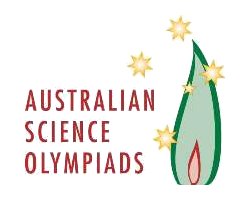Science Olympiad girls sweep eight medals including one gold and break Australia’s record at the International Physics Olympiad
Sydney: YiJie Neo, a Year 12 student from John Monash Science School in Melbourne, has won a gold medal in the International Earth Science Olympiad in France.
Her win takes Australian team medal haul to 17 at the UNESCO-sanctioned 2017 International Science Olympiads.
Another Australian team member, Nishka Tapaswi, a Year 12 student from Hornsby Girls’ High School, set a new record by being the first girl to bring home a silver medal from the 48 th International Physics Olympiad, which was held this year in Jogjakarta, Indonesia.
Nishka is the first female from Australia to receive a Silver medal in the 48 years of the competition. She competed against 400 students from 86 countries and was Australia’s sole silver medallist in the tough Physics competition. Around 400 students from 90 countries attended.
Nishka was placed in the top 8 per cent of physics students in the world at the competition.
YiJie competed against more than 100 students from 29 countries, and finished in the top 10 per cent of Earth Science students in the world.
YiJie and Nishka were two of the eight girls and nine boys who made the teams to represent Australia at the 2017 International Science Olympiads in Biology, Chemistry, Earth Science and Physics.
Amongst them in the Australian team was Anna Singh of Mac.Robertson Girls’ High School, who won a Bronze in International Biology Olympiad held in Coventry, England.
“This is an outstanding achievement for Australia. We are delighted that our female Science Olympians raised the bar in a field that has too few female representatives,” says Ruth Carr, Executive Director of Australian Science Innovations.
“Our impressive medal haul this year is testament to our Science Olympians’ hard work and the program’s ability to not only nurture Australia’s top science students’ passion and talent for science, but also to break down gender stereotypes in science-related fields,” says Carr.
The students spent a year in exams and intensive training before competing on the international stage.
They outperformed 5,015 other students from more than 300 schools in the qualifying exams, making a shortlist of 93 to attend a two-week summer school at the Australian National University in preparation for the International Science Olympiad competitions.
The Australian Science Olympiad program is run by Australian Science Innovations and is funded through the Australian Government’s National Innovation and Science Agenda, with support from the Australian National University.
Vir Rajendra

